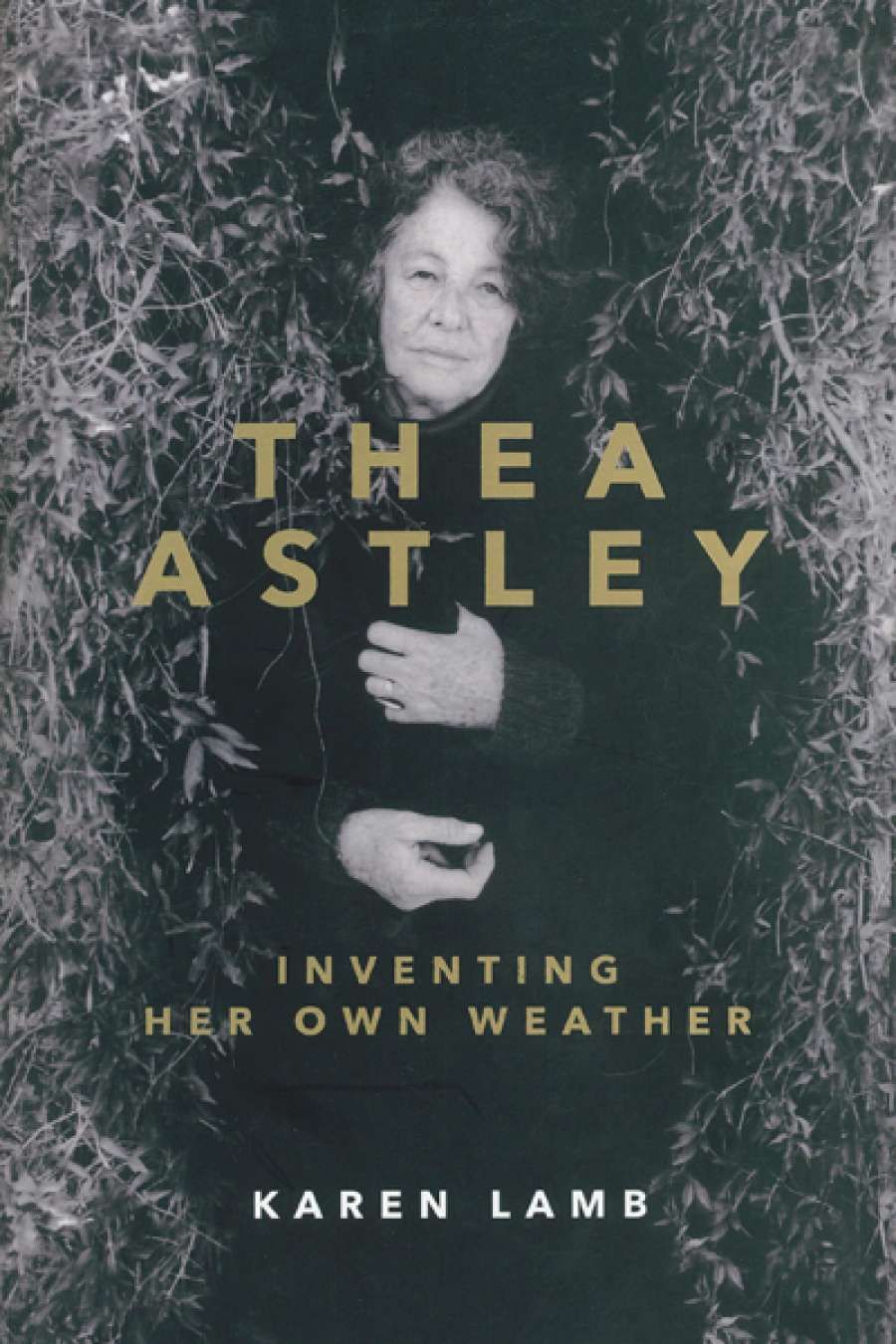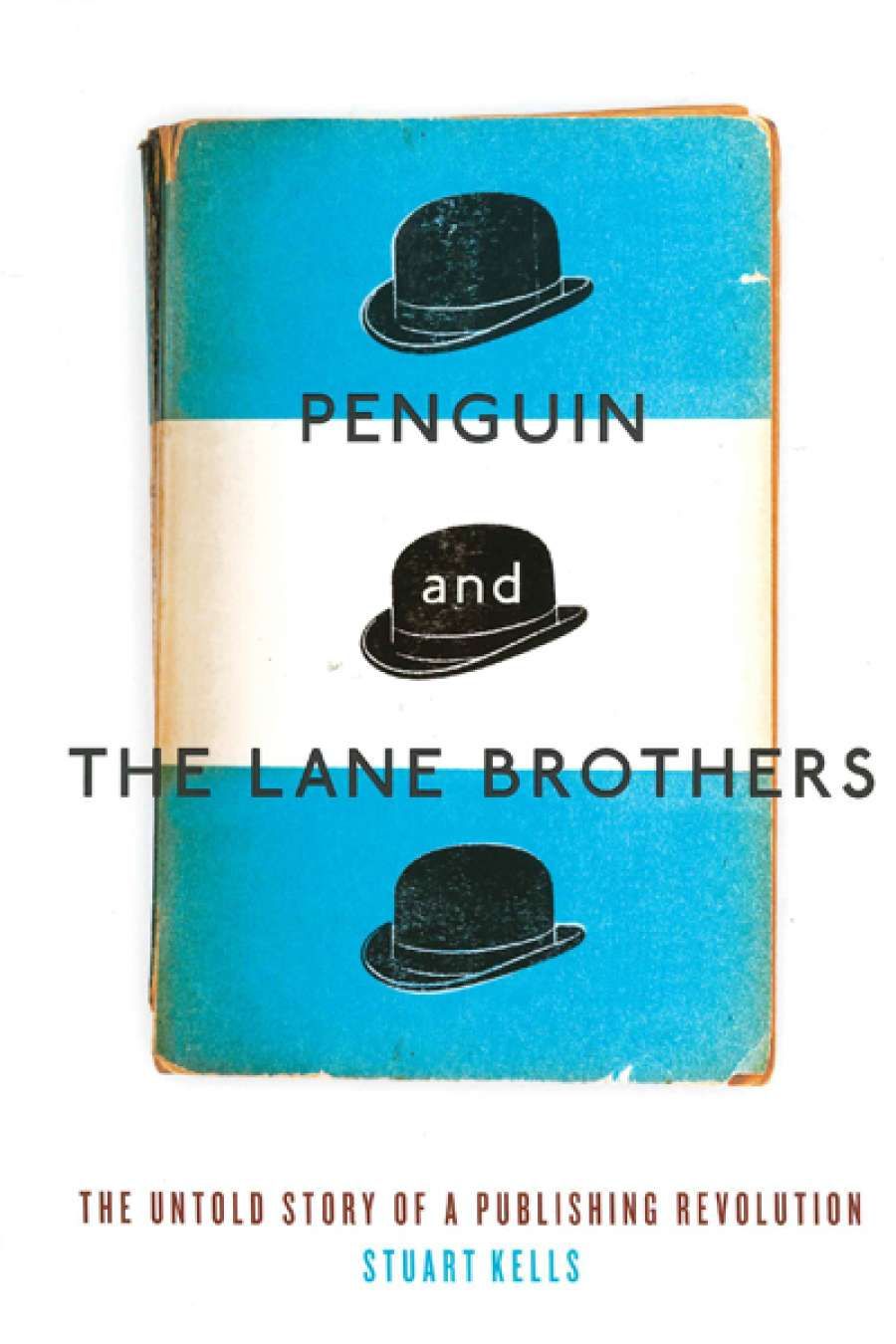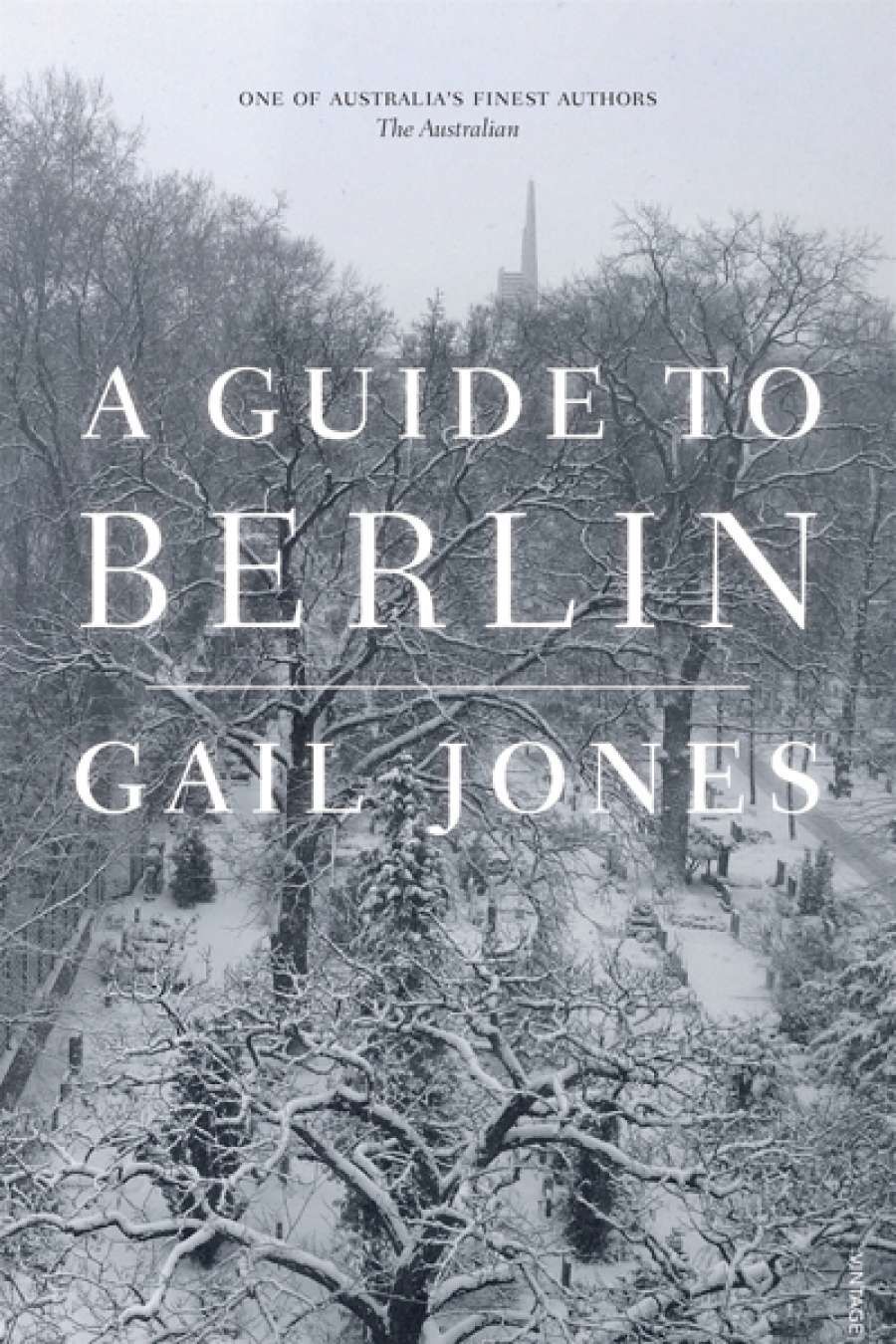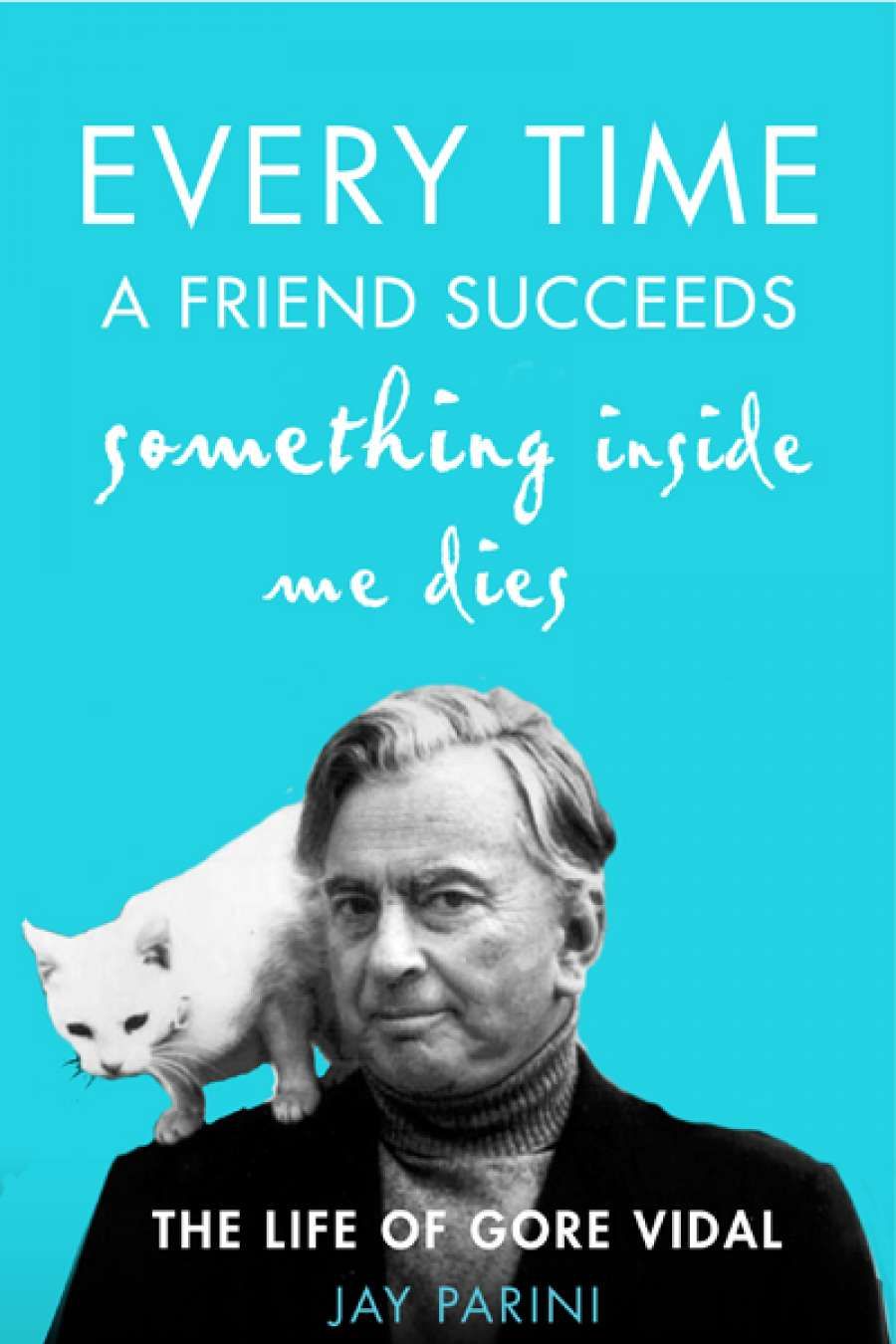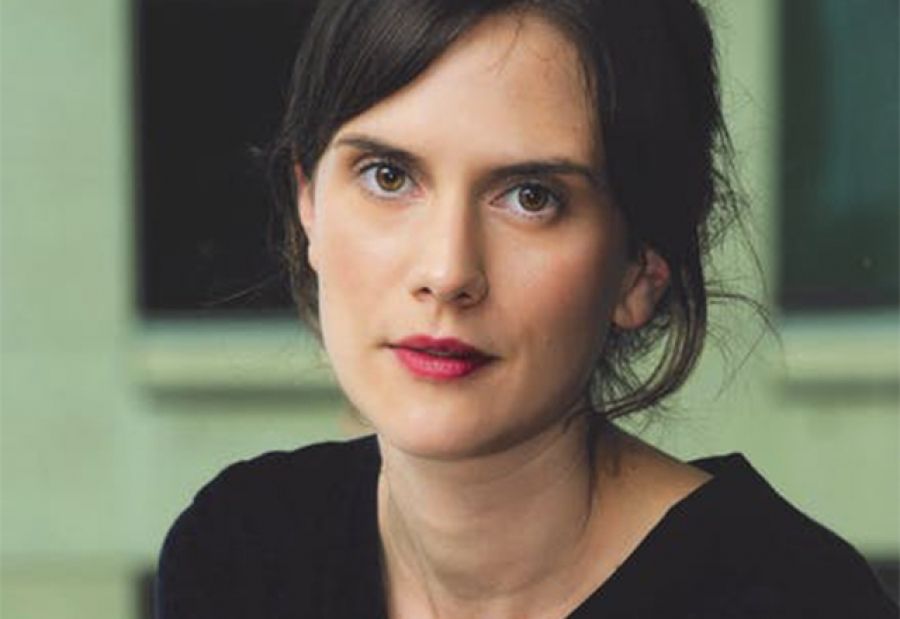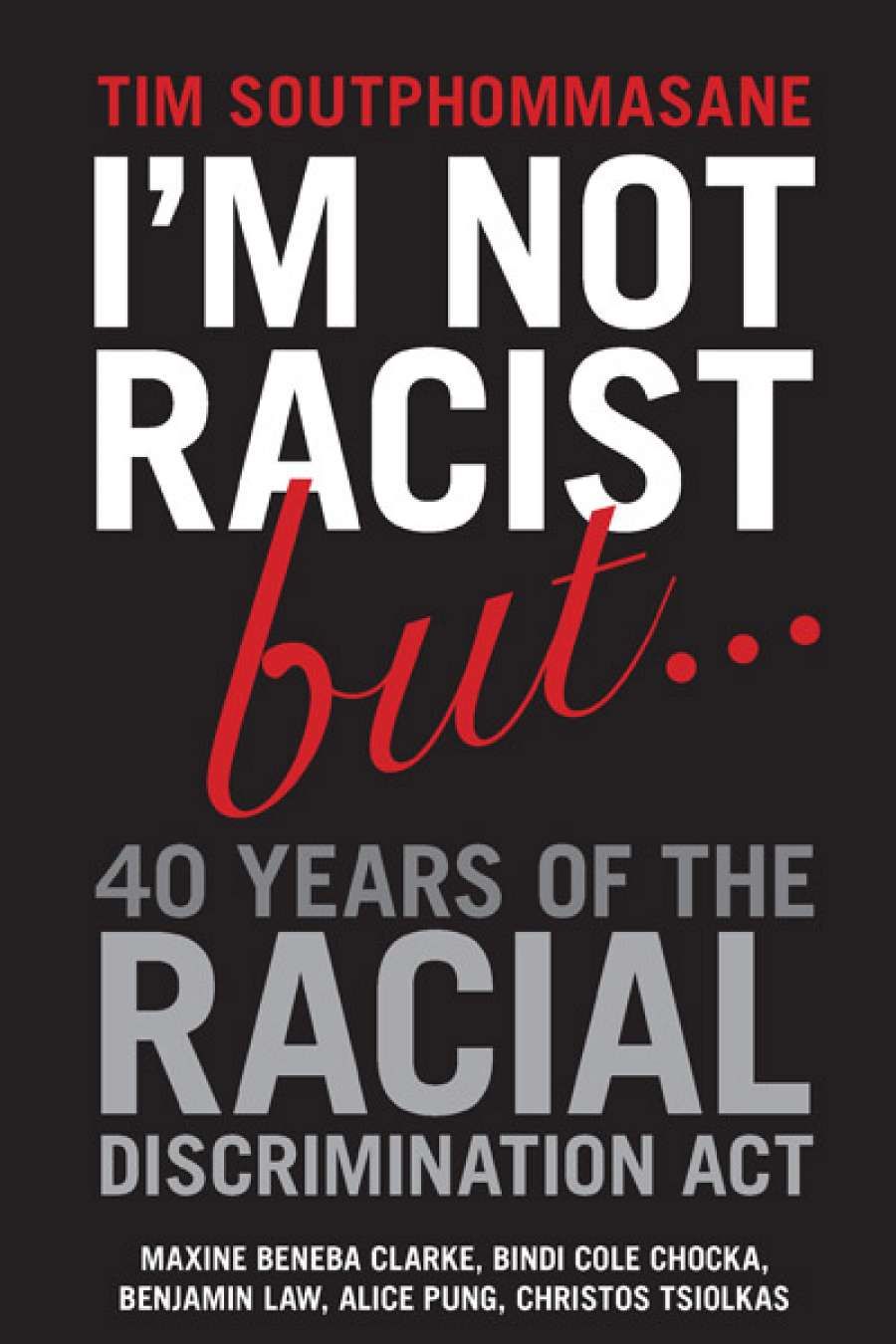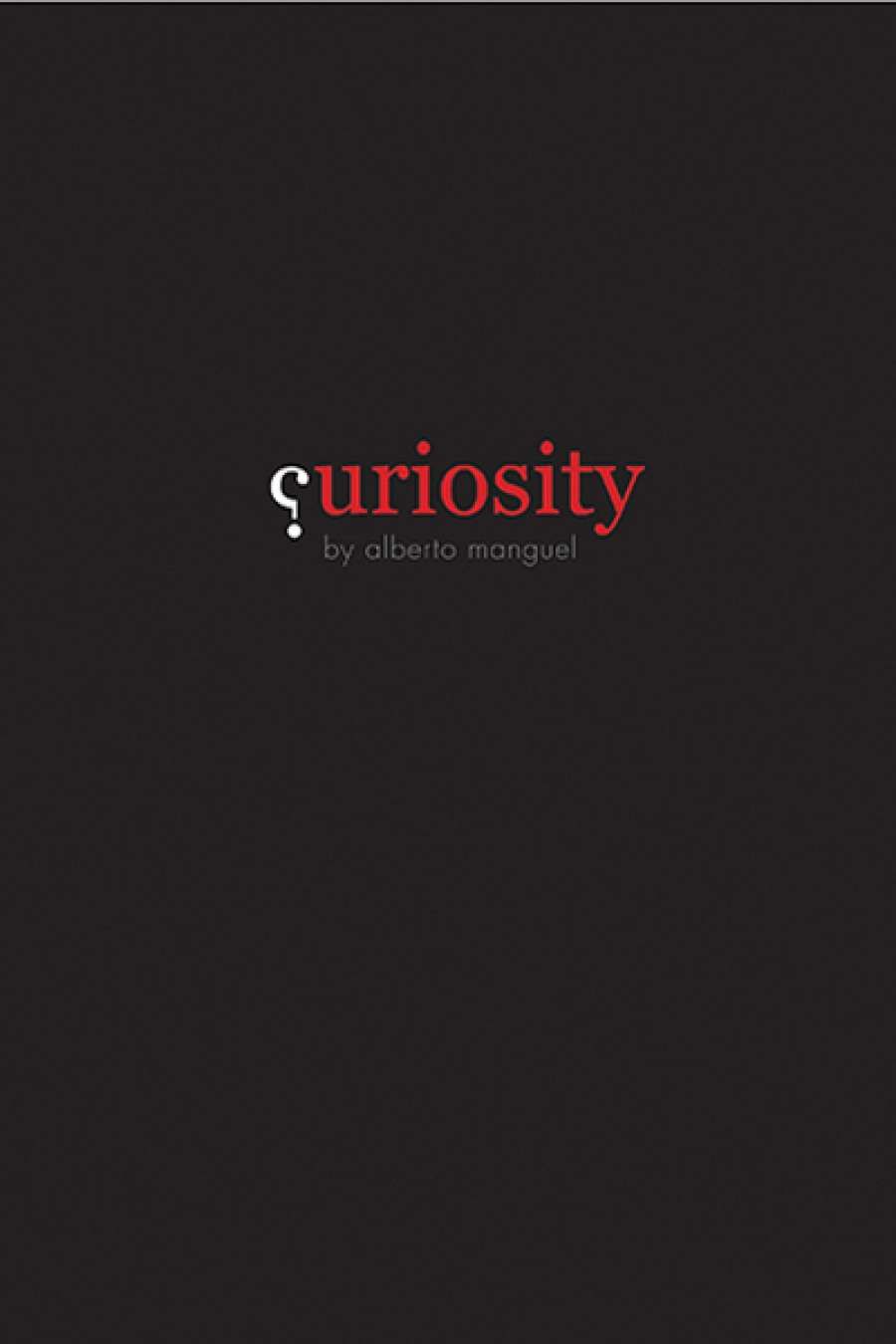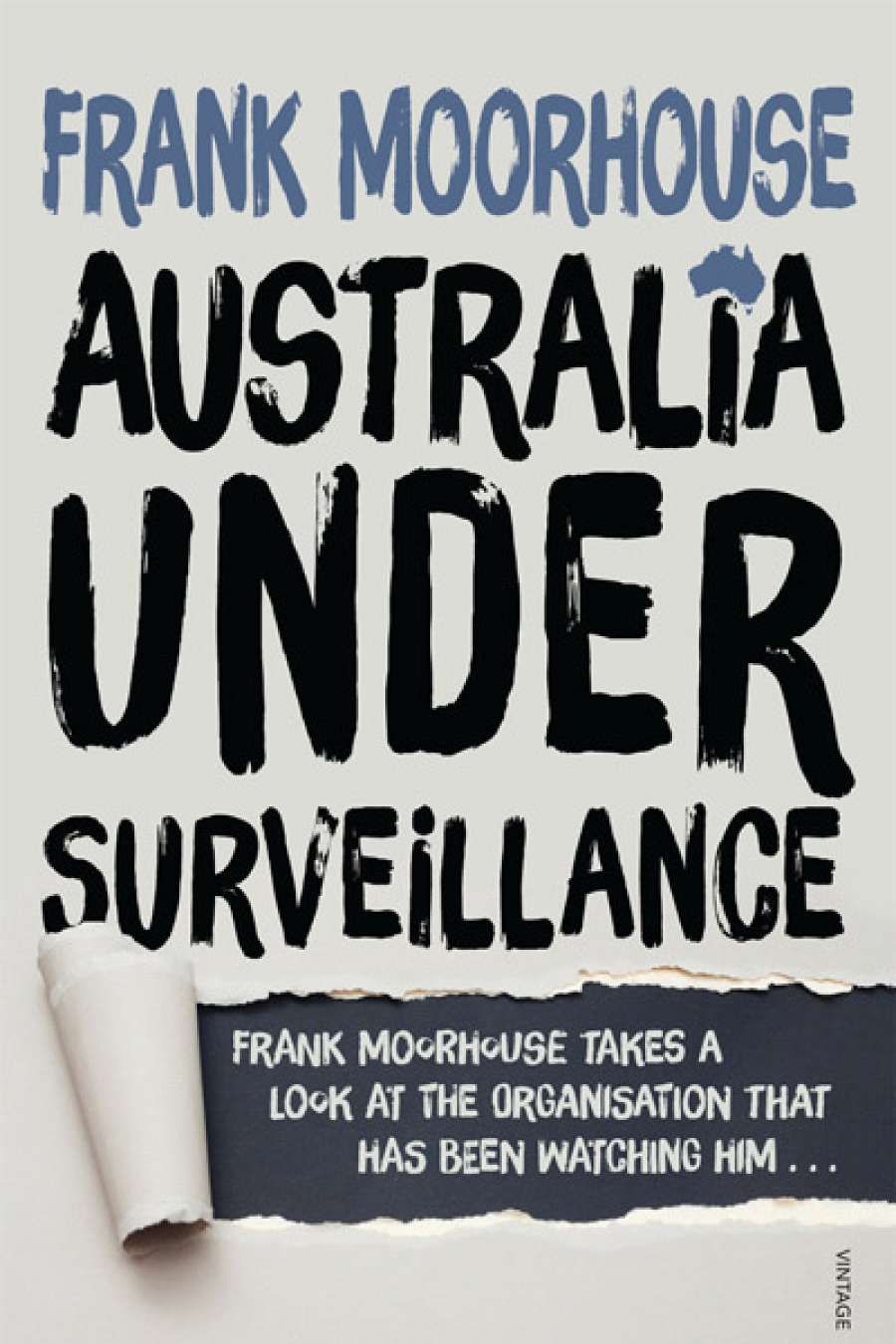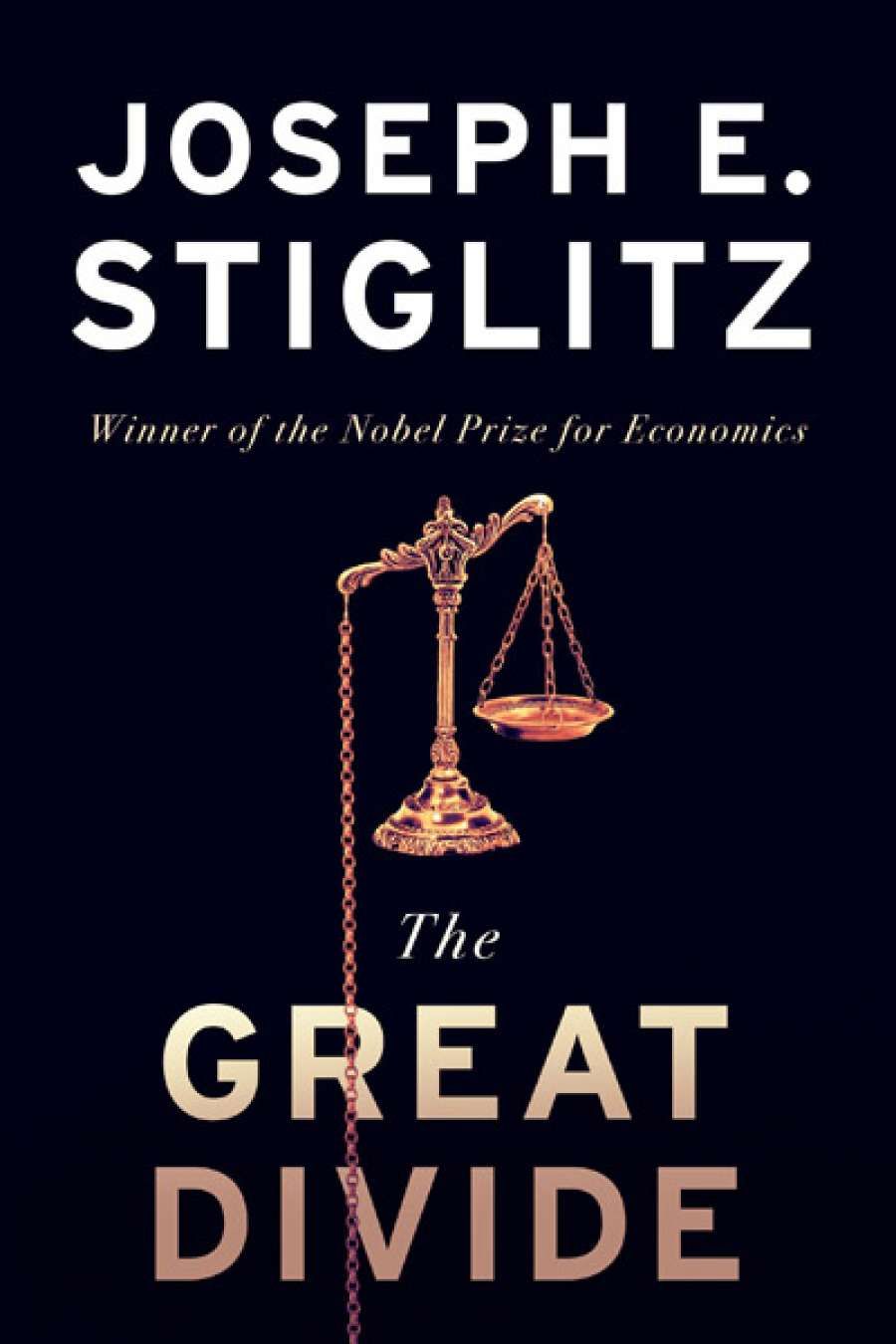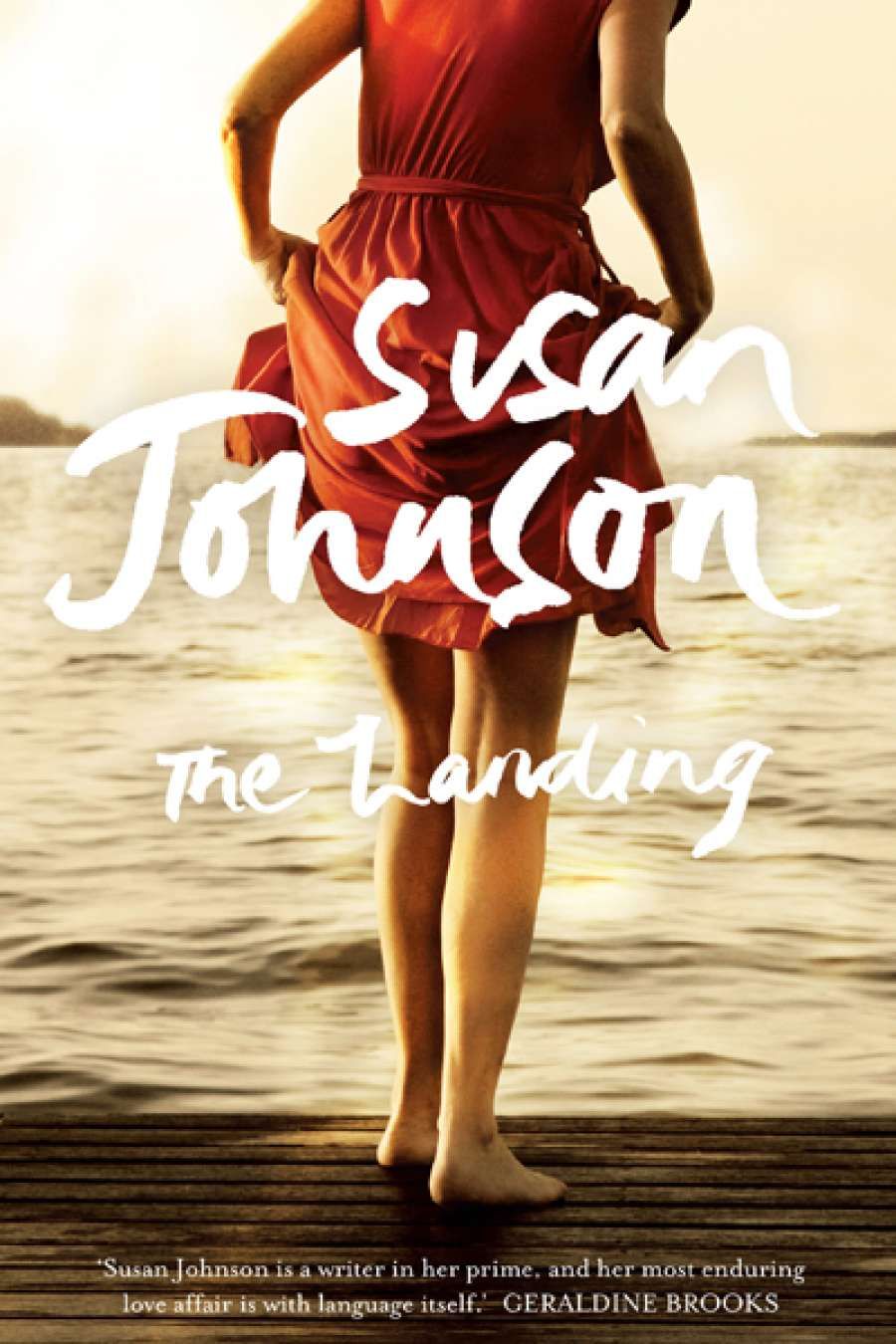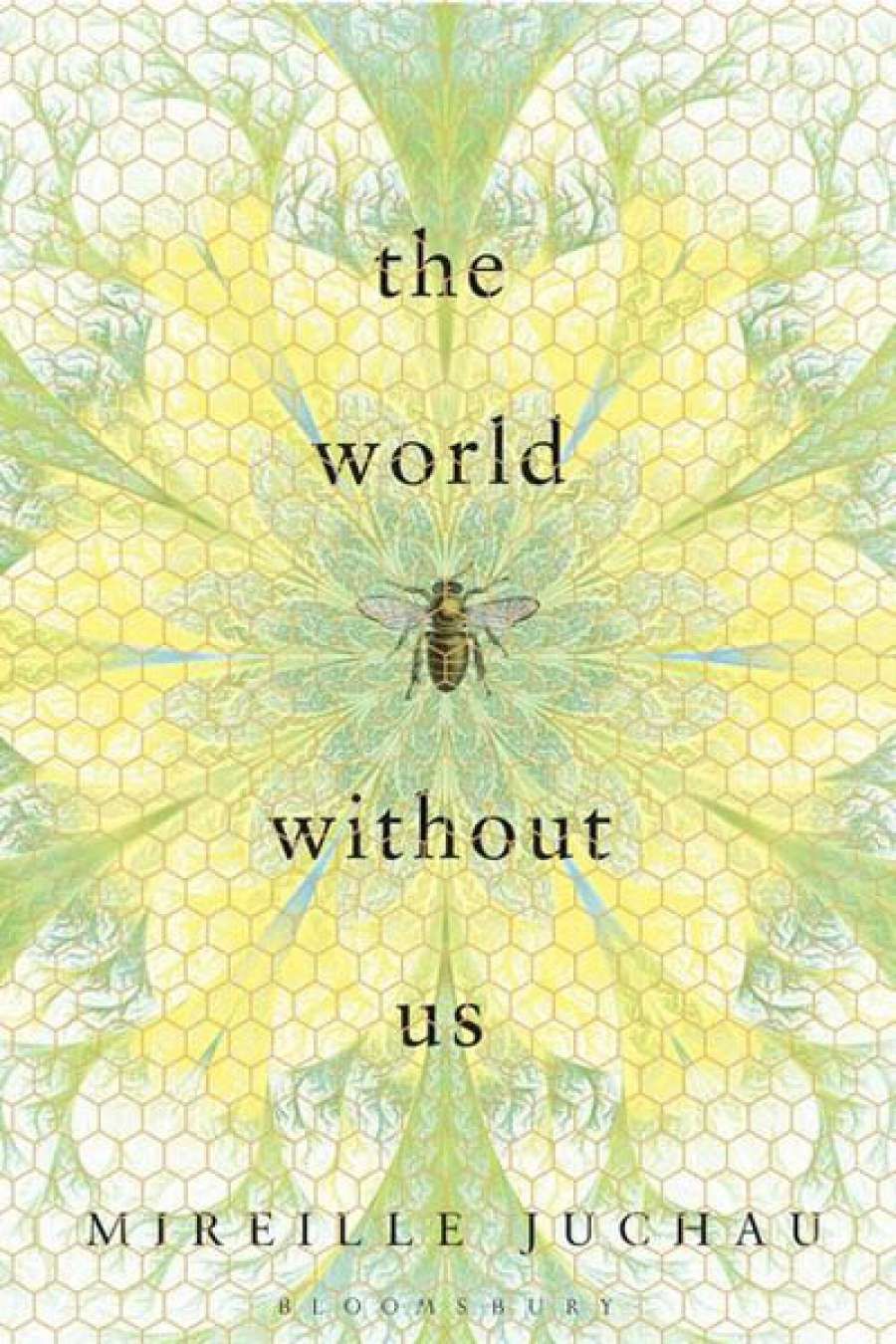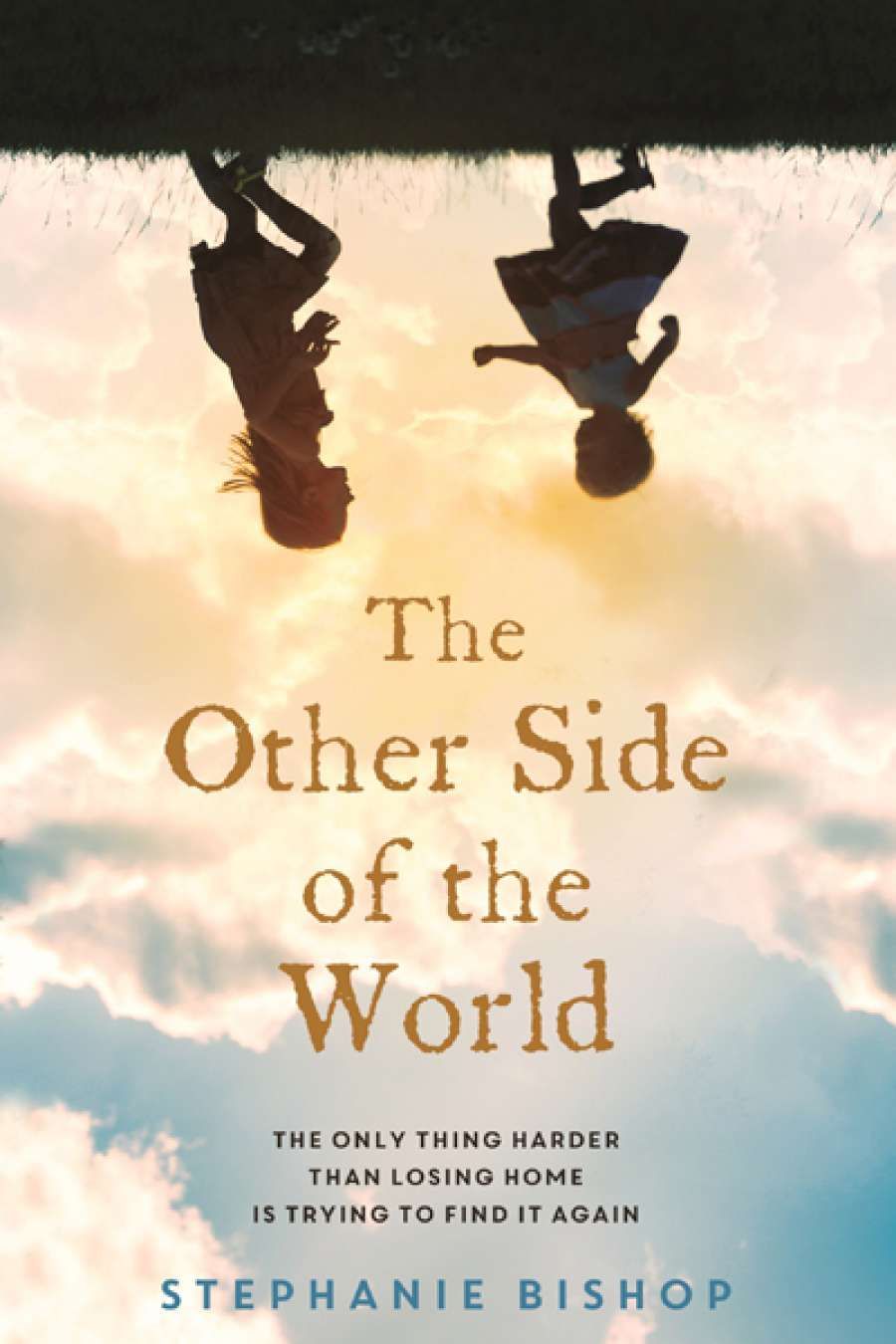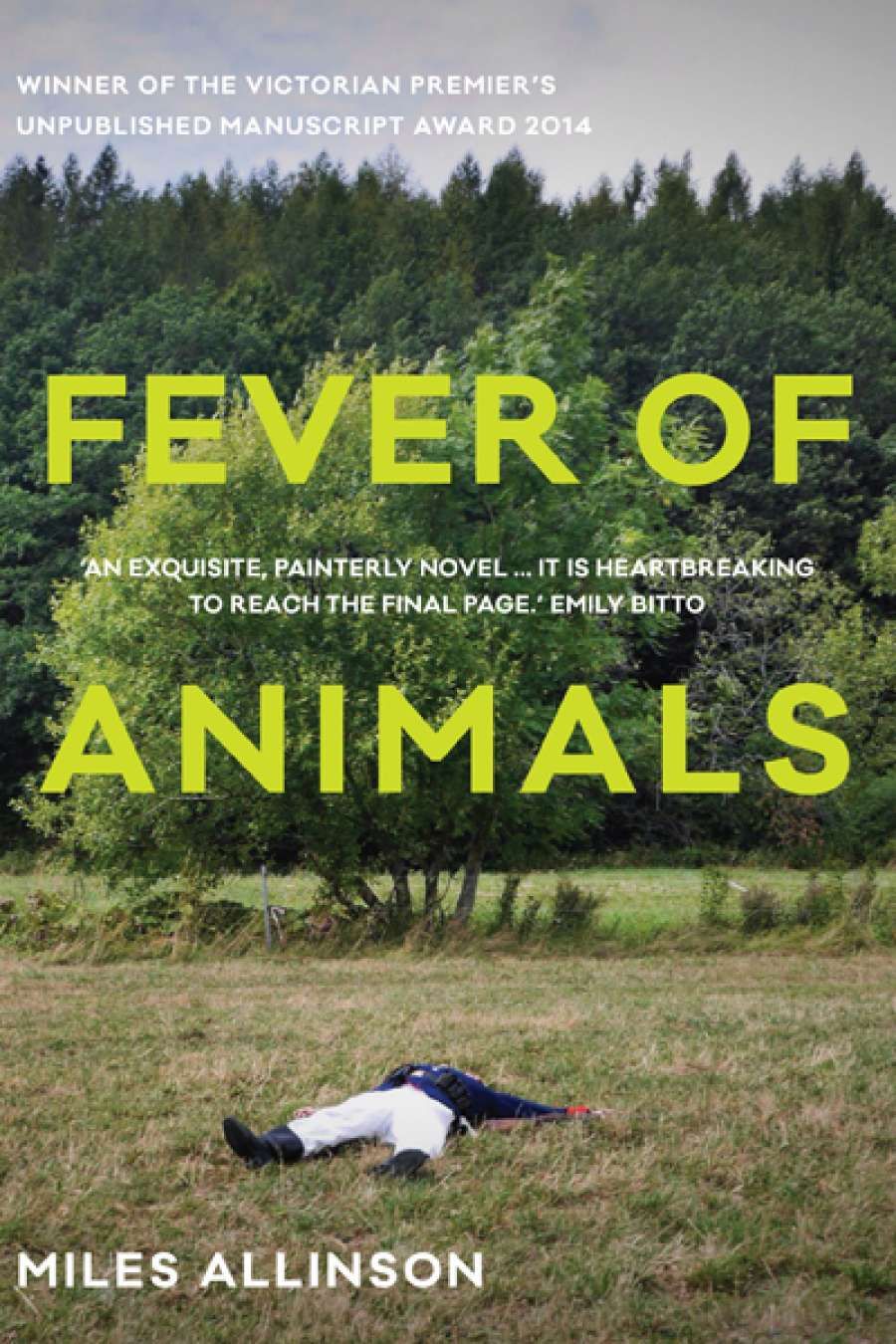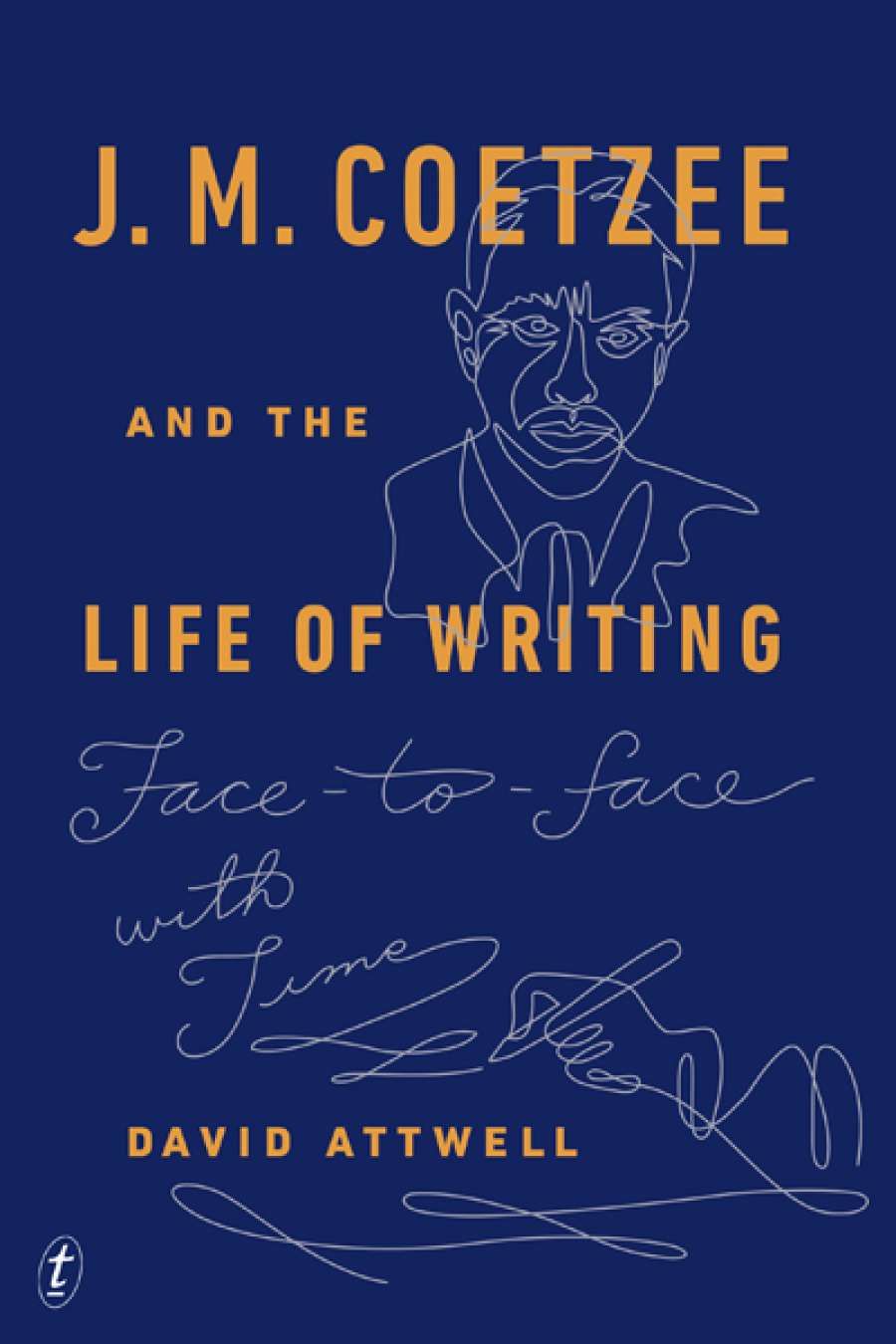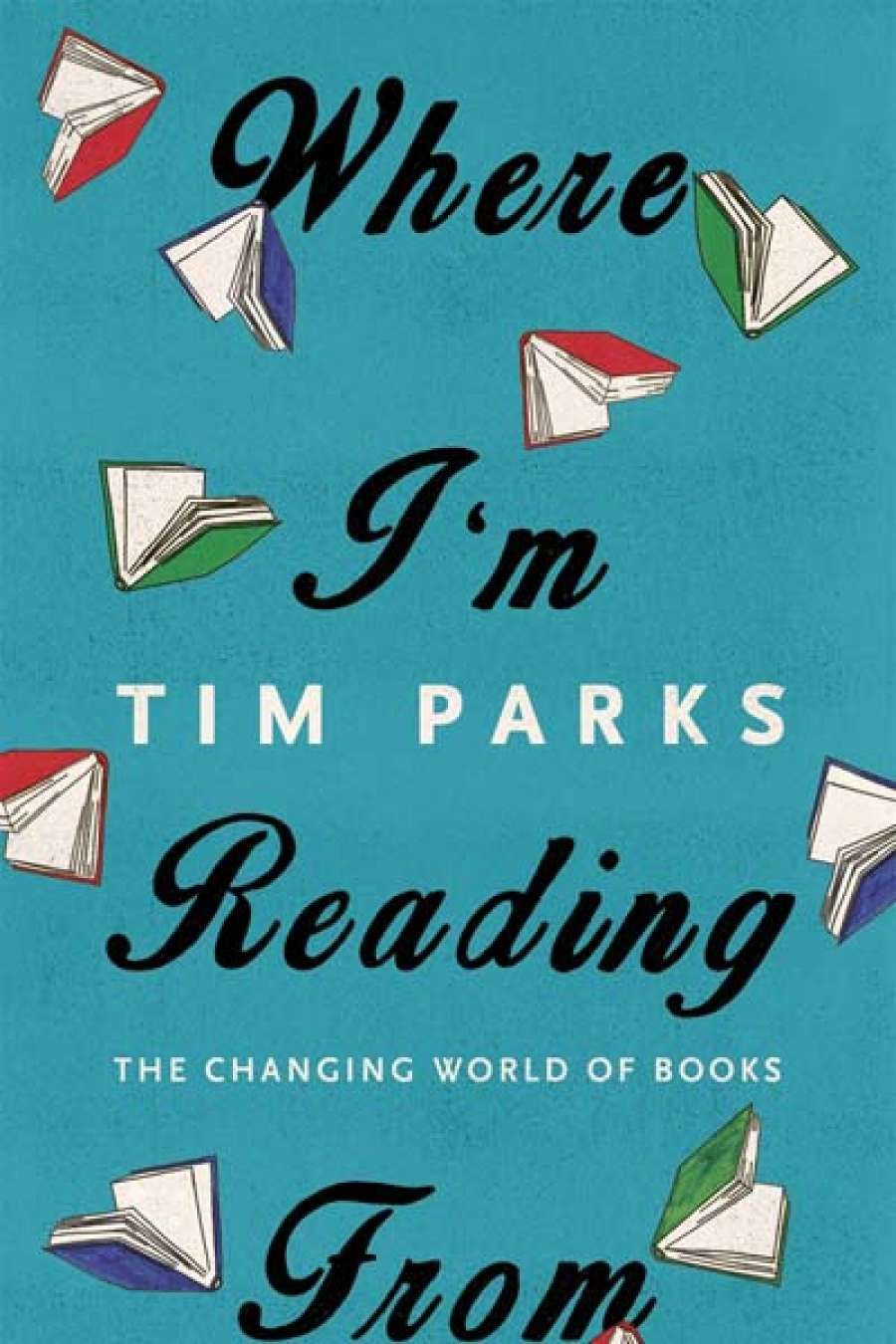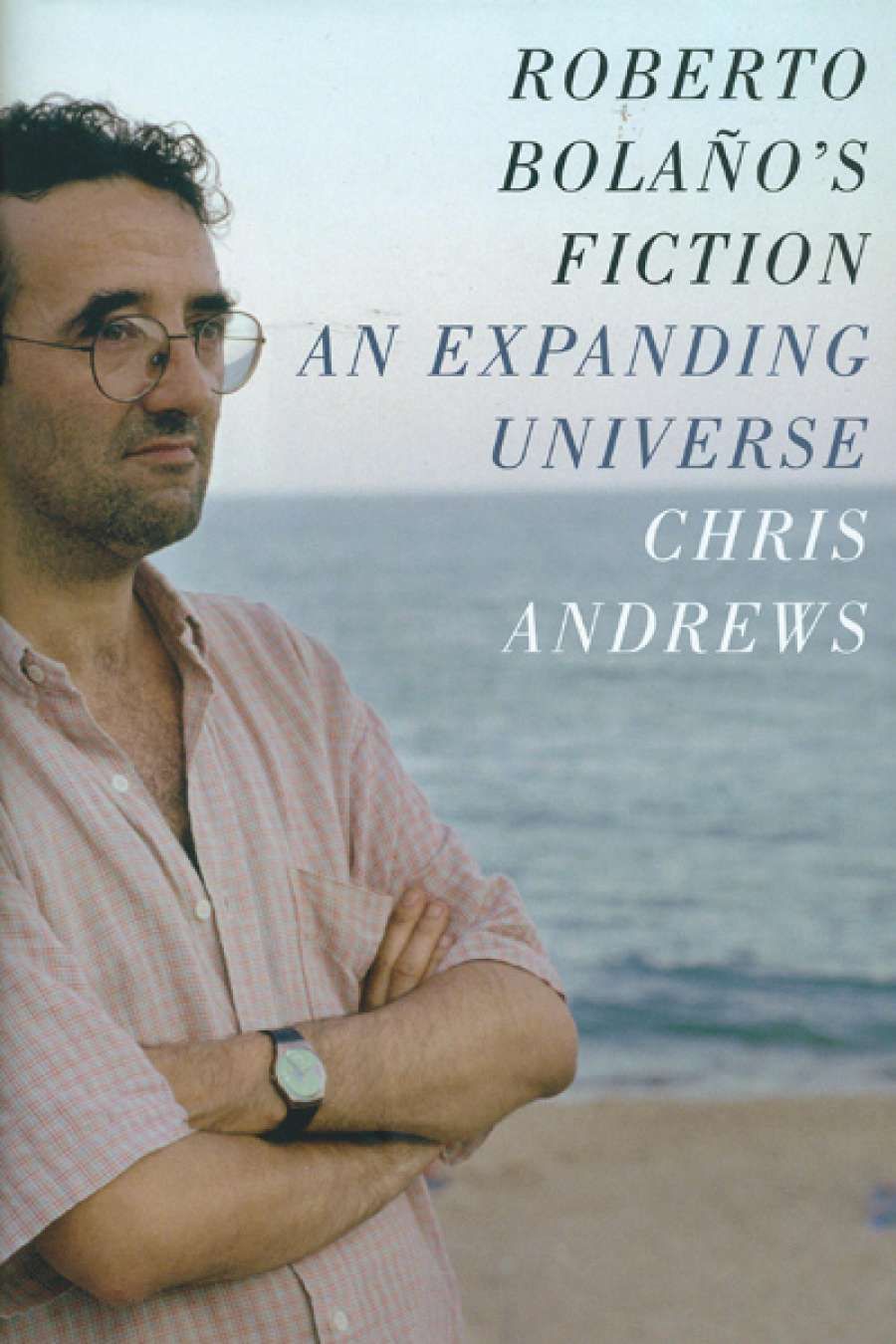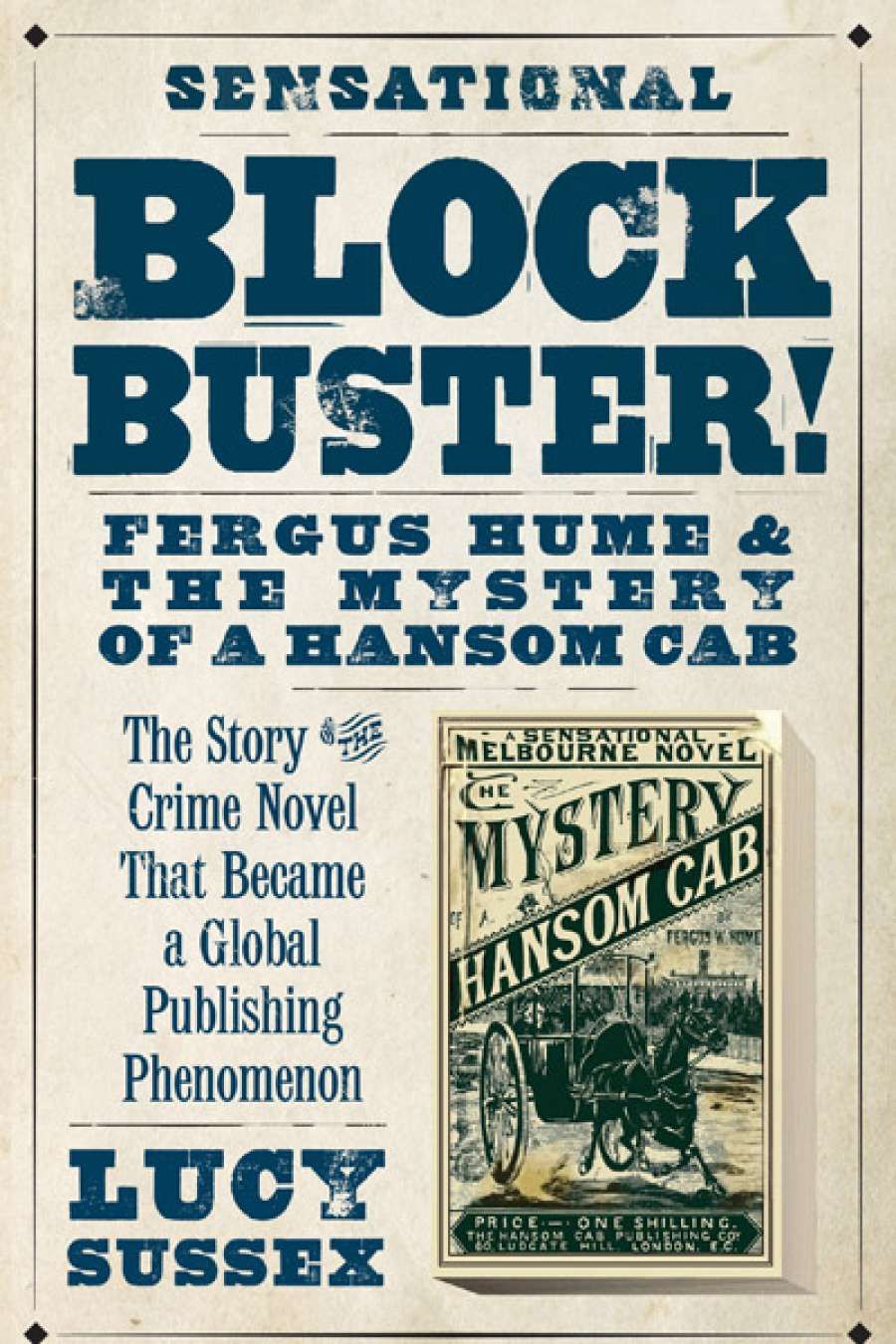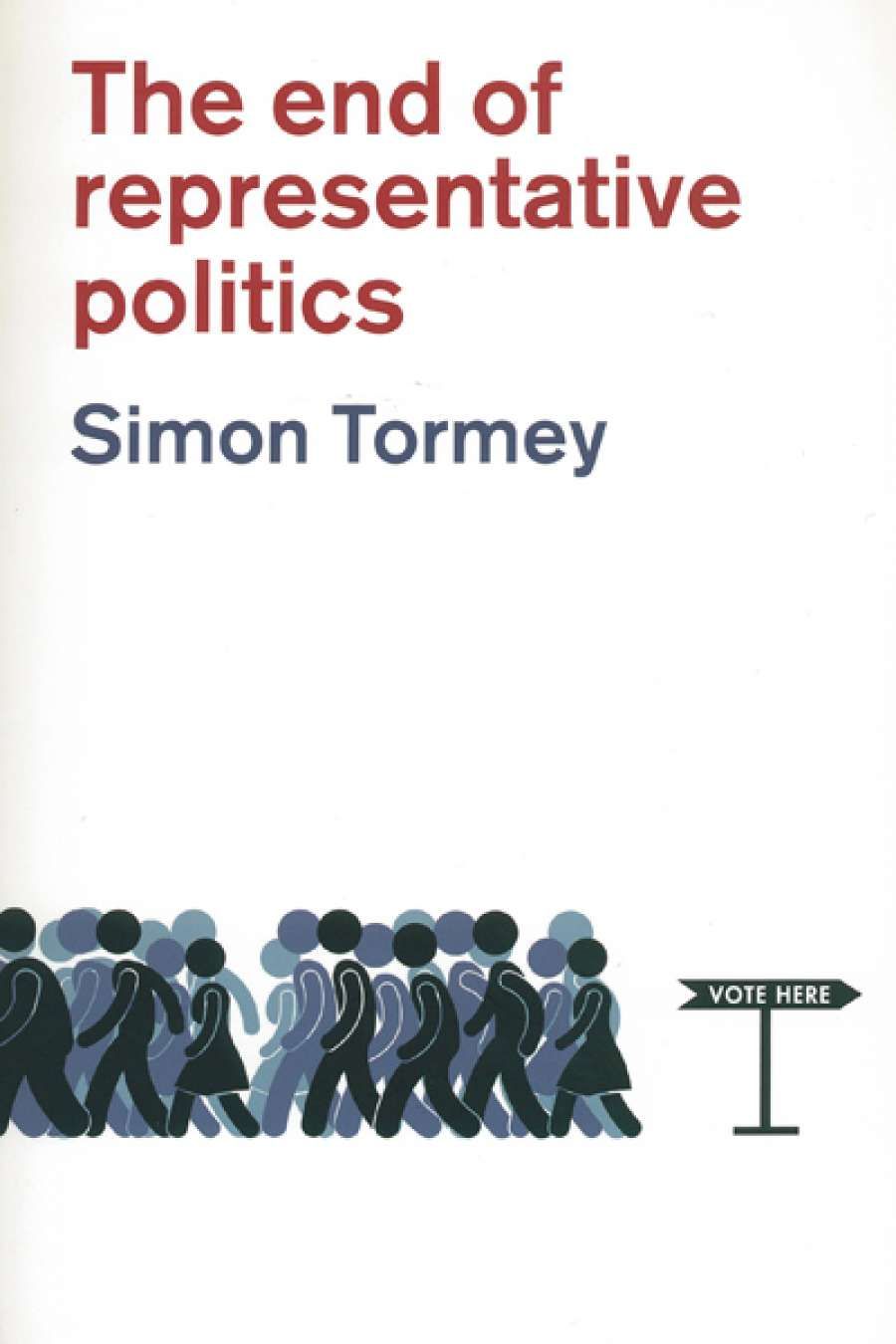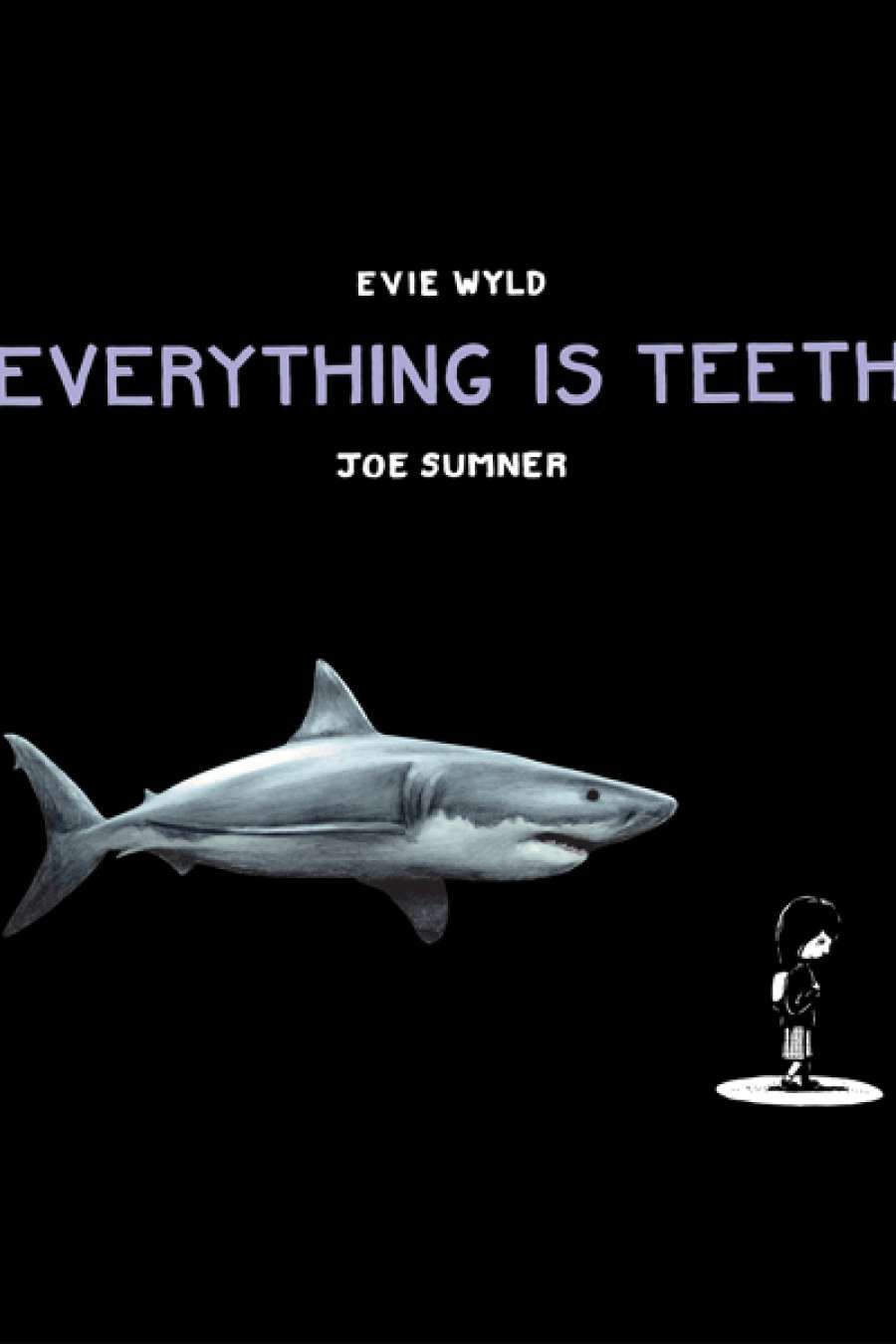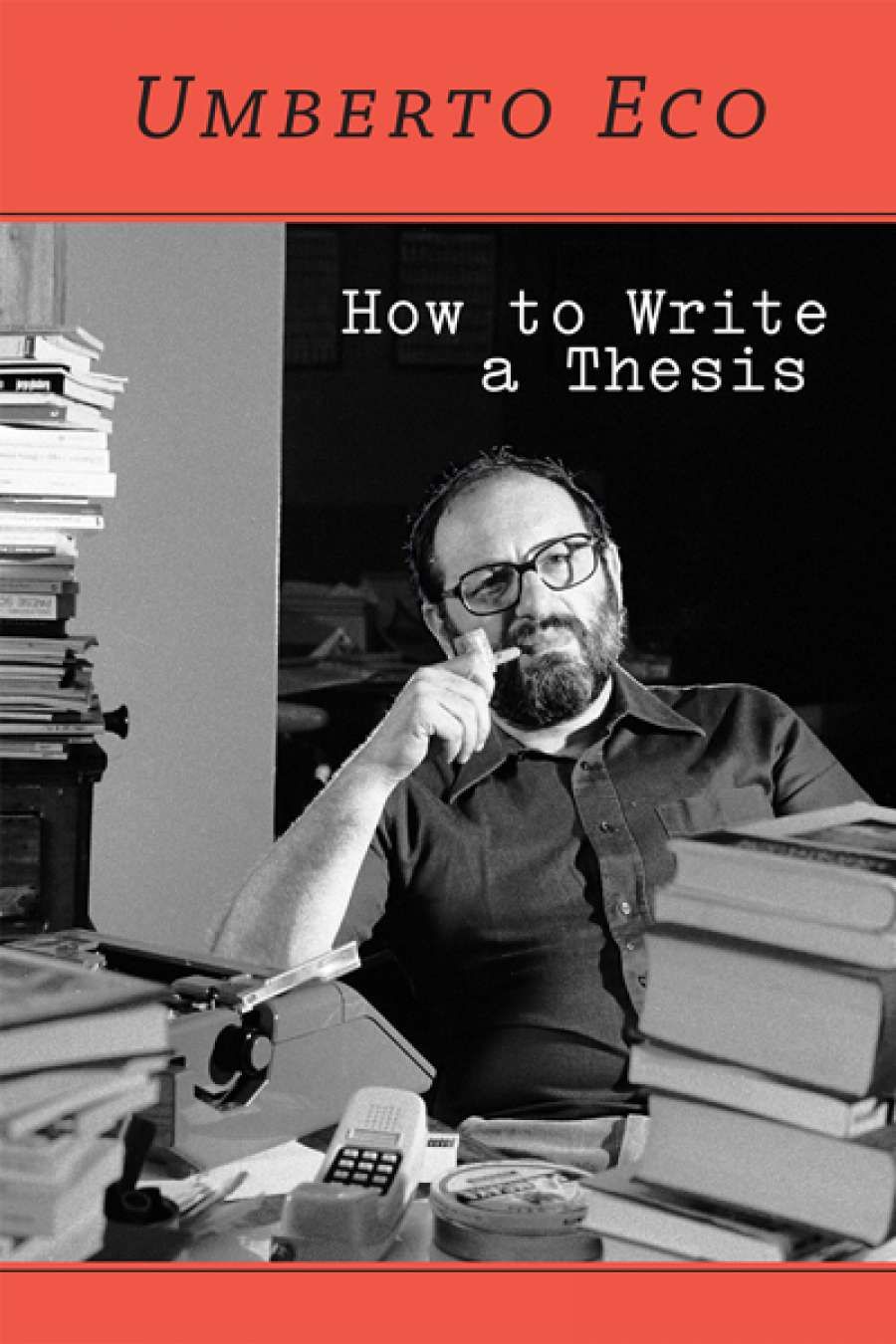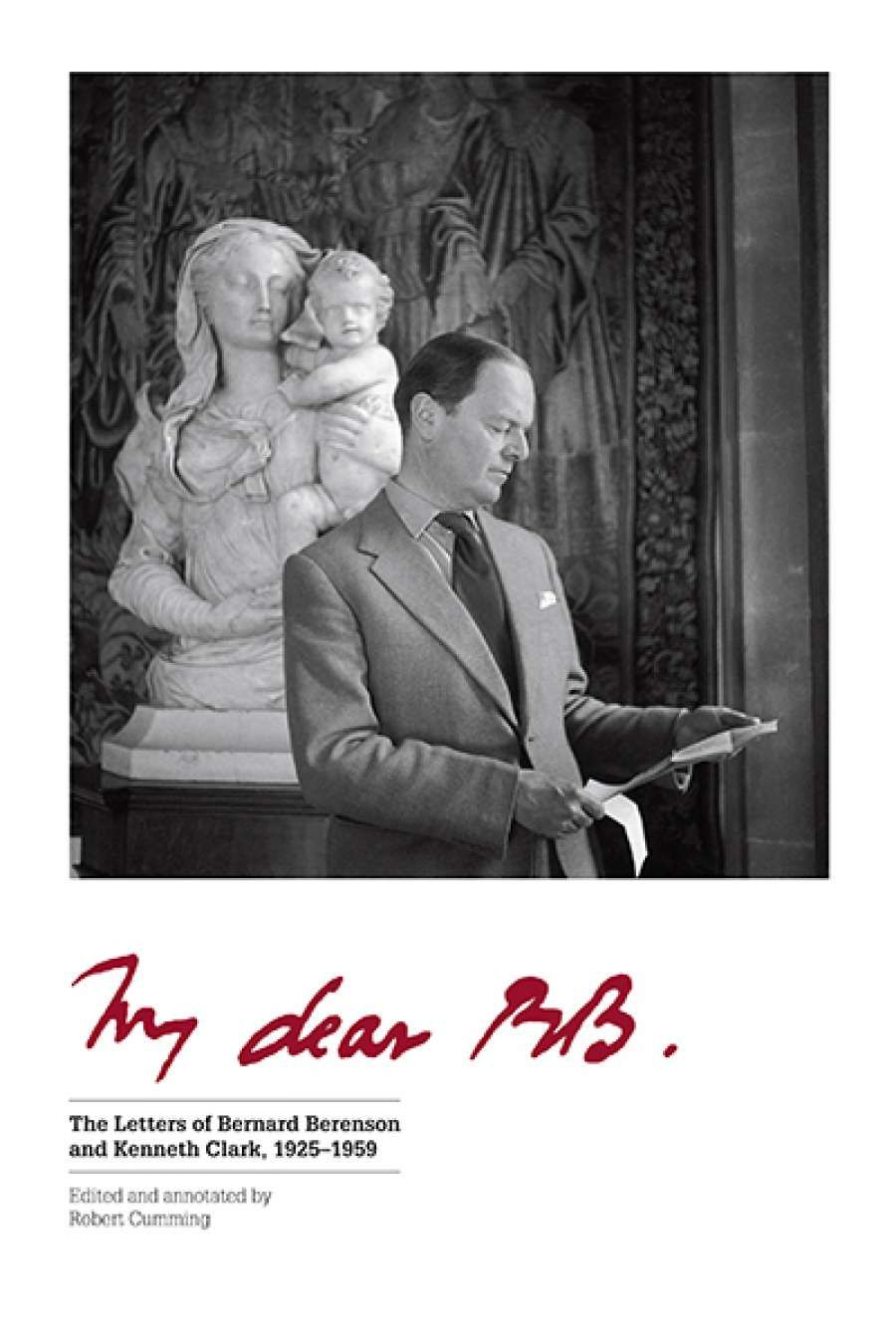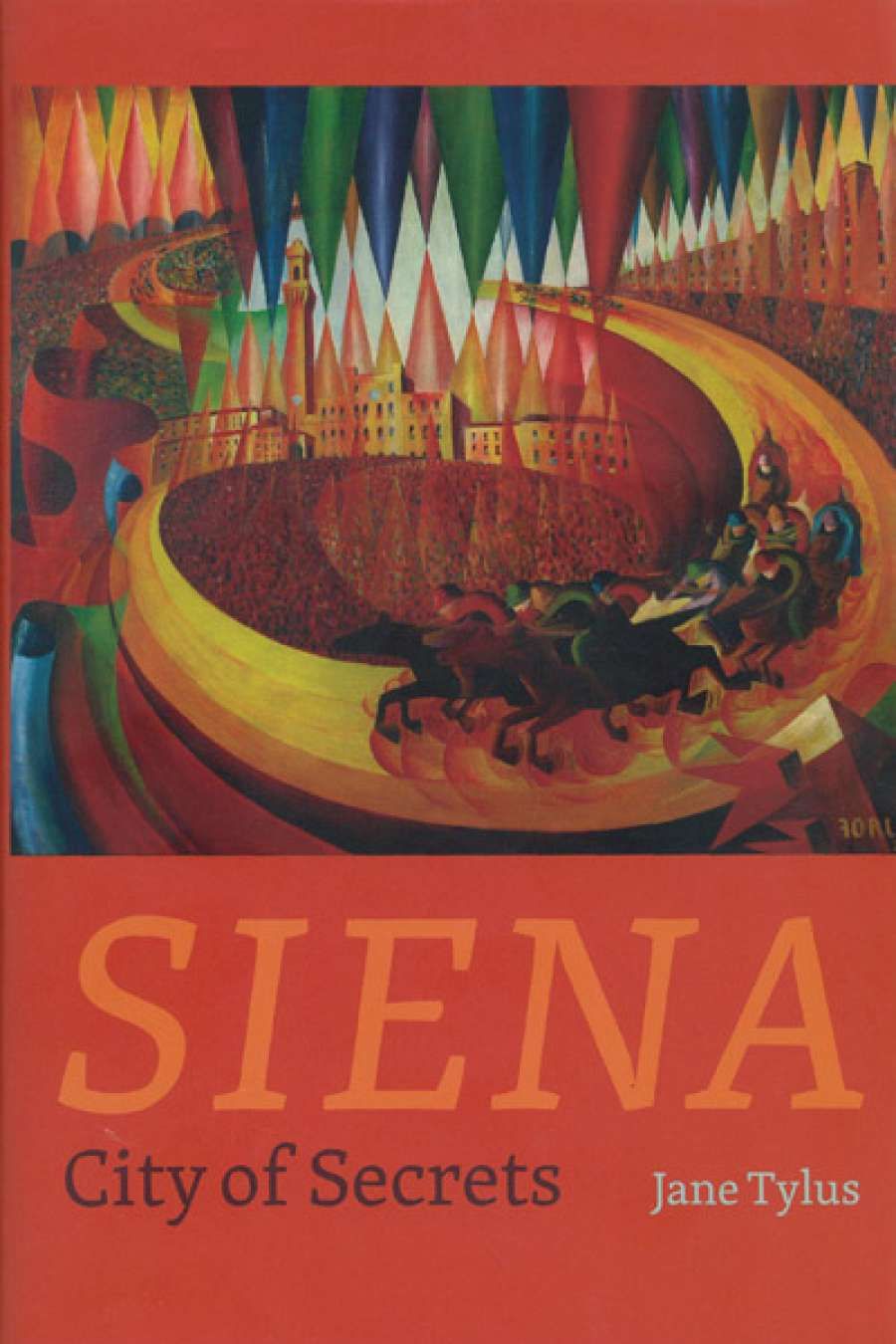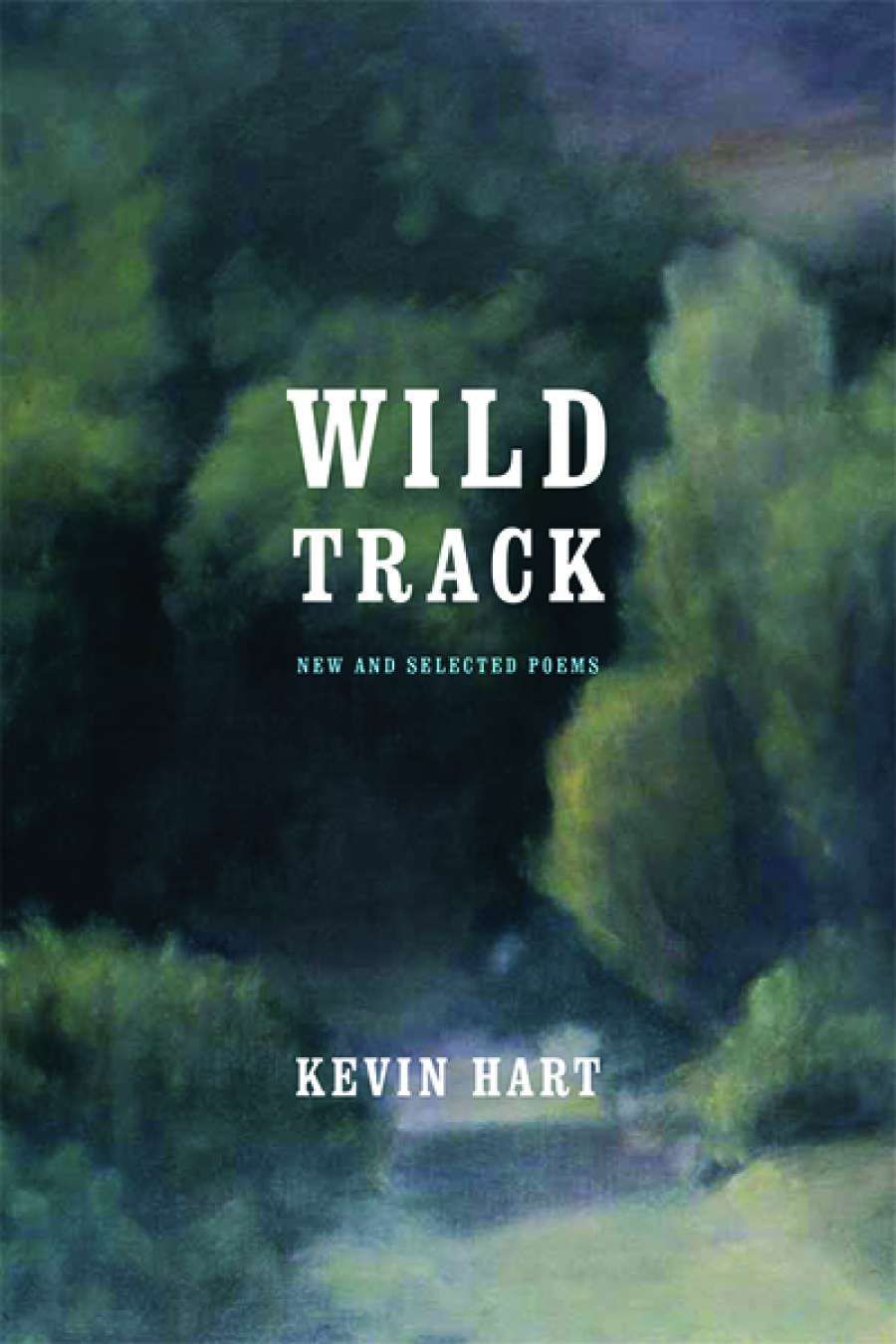- Free Article: Yes
- Contents Category: Literary Studies
Early success is no guarantee of a book’s continued availability or circulation. Some major and/or once-fashionable authors recede from public consciousness, and in some cases go out of print. We invited some writers and critics to identity novelists who they feel should be better known.
Debra Adelaide
Helen de Guerry Simpson was a successful novelist, poet, playwright, broadcaster, and musician. She left Australia at the age of sixteen but returned for visits. Several of her books were set partially or fully in Australia, including the acclaimed historical novel Under Capricorn (1937), which was filmed by Alfred Hitchcock in 1949. For me, her most remarkable novel is Boomerang (1932), which is quintessentially Australian in its ironic voice and its wry dramatisation of such things as Catholic–Protestant rivalries, small-town prejudices, and parochialism. Full of surprises, it develops into a sweeping blend of family history, fiction, and romance set from the 1780s to World War I, and ends with the narrator discovering love in the most unlikely circumstances, amid the desolate battlefields of the Somme. If only for its brilliant use of the boomerang metaphor, this novel and its author should be better remembered.
Bernadette Brennan
 Joseph Furphy, Such is Life (Angus & Robertson, 1986 edition)Naming a single novelist whom I think should be better known is extremely difficult, but I will go out on a limb: Joseph Furphy (or should that be Tom Collins?). Furphy’s Such Is Life (1903) is an erudite, extremely funny, and rollicking read. Gabrielle Carey attends a Finnegans Wake reading group; Helen Garner attends one on Virgil. Such Is Life would come to all its vibrant, baffling, hilarious glory in such a setting. At the very least it deserves to be read aloud. Furphy described the novel as ‘temper democratic; bias, offensively Australian’. He wears his literary learning lightly, his opinions less so. Shakespeare, Sterne, Zola, the Bible, and the English monarchy sit alongside a cross-dressing Australian shepherd, lost children, bullockies, and drovers’ dogs. Sectarian, class, and gendered tensions, philosophical musings, and tales of lost love, all find voice under the stars out on the Riverina. Excised chapters of the original manuscript were redrafted and published as Rigby’s Romance (1946) and Buln-buln and the Brolga (1948). Such Is Life may not be the easiest read, but I will always be grateful that I was introduced to the novels of Joseph Furphy.
Joseph Furphy, Such is Life (Angus & Robertson, 1986 edition)Naming a single novelist whom I think should be better known is extremely difficult, but I will go out on a limb: Joseph Furphy (or should that be Tom Collins?). Furphy’s Such Is Life (1903) is an erudite, extremely funny, and rollicking read. Gabrielle Carey attends a Finnegans Wake reading group; Helen Garner attends one on Virgil. Such Is Life would come to all its vibrant, baffling, hilarious glory in such a setting. At the very least it deserves to be read aloud. Furphy described the novel as ‘temper democratic; bias, offensively Australian’. He wears his literary learning lightly, his opinions less so. Shakespeare, Sterne, Zola, the Bible, and the English monarchy sit alongside a cross-dressing Australian shepherd, lost children, bullockies, and drovers’ dogs. Sectarian, class, and gendered tensions, philosophical musings, and tales of lost love, all find voice under the stars out on the Riverina. Excised chapters of the original manuscript were redrafted and published as Rigby’s Romance (1946) and Buln-buln and the Brolga (1948). Such Is Life may not be the easiest read, but I will always be grateful that I was introduced to the novels of Joseph Furphy.
Geraldine Brooks
Tony Morphett, best known as a television writer and author of young adult fiction, in 1969 wrote a remarkable novel titled Thorskald, about an Australian artist, whose life is unfolded from multiple points of view. It is beautifully constructed, with luscious descriptions of painting, the art-making process, and Australian bohemia of the 1950s and 1960s. I loved it when I first read it in my mid-teens. It has been out of print for many years, and Morphett himself does not list it on his website.
Gregory Day
As the literatures of the mid-twentieth century became increasingly urbanised and internationalised, George Mackay Brown, through illness and shyness, lived a local life in the independent and dramatic weather of the Orkney Islands. His fiction and poetry are a freakish reticulation of historical and elemental voices, rife with the luminosity and high jinks of the Scandinavian sagas, as well as the social exposure of contemporary island life.
Brown suffered from what Auden called topophilia – or place-love. After a brief foray at university in Edinburgh, he returned to the Orkneys and stayed put. The islands had been his first book and now they became his creative foundry. As his work won acclaim, many writers made the pilgrimage to see him, Robert Lowell, Ted Hughes, Seamus Heaney among them. They found a generous man whose body of work seems more relevant than ever in our hyper-connective yet disconnected world.
Ian Donaldson
 Compton Mackenzie, Sinister Street (Penguin edition)Henry James believed that Sinister Street (1913–14) was the most remarkable book written by a young author in his lifetime, and its author, Compton Mackenzie, the most promising English novelist of his generation. Scott Fitzgerald ‘idolised’ the novel; Ford Madox Ford thought it ‘possibly a work of real genius’; and the young George Orwell read it with surreptitious admiration – the sexual scenes were considered strong stuff – at his preparatory school. When I first encountered this huge, prolix, but extremely readable work more than fifty years ago (while at Magdalen College, Oxford, where the central chapters of the novel are set), it was still a popular Penguin title, and Mackenzie himself a prominent figure in the British literary landscape. These days the novel, like its author, is barely known. A brilliant television adaptation – the last was by Ray Lawler in 1969 – might help to revive its fortunes.
Compton Mackenzie, Sinister Street (Penguin edition)Henry James believed that Sinister Street (1913–14) was the most remarkable book written by a young author in his lifetime, and its author, Compton Mackenzie, the most promising English novelist of his generation. Scott Fitzgerald ‘idolised’ the novel; Ford Madox Ford thought it ‘possibly a work of real genius’; and the young George Orwell read it with surreptitious admiration – the sexual scenes were considered strong stuff – at his preparatory school. When I first encountered this huge, prolix, but extremely readable work more than fifty years ago (while at Magdalen College, Oxford, where the central chapters of the novel are set), it was still a popular Penguin title, and Mackenzie himself a prominent figure in the British literary landscape. These days the novel, like its author, is barely known. A brilliant television adaptation – the last was by Ray Lawler in 1969 – might help to revive its fortunes.
Anna Funder
Christina Stead’s The Man Who Loved Children is perhaps the most brilliant achievement in Australian literature, but it has had a hard life since its publication in 1940. It suffered a trans-Pacific displacement of setting from Sydney to Washington, DC. And it has suffered from the chronic and, as ever, unacknowledged doubt that something as brilliant could come from a woman. Women are not expected to be as chillingly clever as Stead is, as warm and funny, as stupendously, miraculously verbal. They are not expected to have the broad view as well as the narrow, the deft control of plot. Nor, to be fair, are most men – apart from Tolstoy. Yet here we have a book that matches Tolstoy in ambition and greatness – and concomitant grand messiness.
Andrea Goldsmith
W. Somerset Maugham’s work is still in print, but this once-popular writer is no longer fashionable or much read. He is thought to be too middle-class, too in thrall to empire, too British. He is all these things, but he’s so much more.
The structure, pace, and narrative force of Maugham’s short stories are the work of a master. He is a consummate storyteller, whether in short or long form. Of Human Bondage (1915) is perhaps the best novel of obsessive love ever written. Cakes and Ale (1930), with its insider’s portrayal of literary fame and envy, is a gem. The Razor’s Edge (1944) is a subtle yet complex story of a privileged young man in search of spiritual meaning. His notebooks and The Summing Up (1938) are essential reading for all writers.
Maugham’s fiction is timeless with its focus on enduring human concerns like love, desire, prejudice, the powerlessness of childhood, and the situation of women. He merits his metre of shelf in my library.
Rodney Hall
Elizabeth Bowen’s The House in Paris, first published in 1935, casts an immediate spell. Every moment of the book is lived intensely. The scale is extremely small, which magnifies the impact. Two children, previously unknown to one another, spend a single day in a house in Paris. Their paths cross in transit to other destinations. The subtlety and vividness of portraiture is astonishing. Even the simplest sentences are fraught with meaning. ‘He noted her nearness without noticing her.’ The nine-year-old boy and the eleven-year-old girl assert themselves in each other’s company with forensic good manners. Heart-stoppingly aware of vulnerability, they ward off their fears and hopes alike. Elizabeth Bowen reveals the self-awareness of all her characters with penetrating subtlety and (in some cases) savage wit. The tone and tension are perfectly sustained.
Sonya Hartnett
 Lee Harding, Displaced Persons (Puffin Plus, 1980 edition)When I was a teenager it was possible to buy a copy of Lee Harding’s 1979 young adult novel Displaced Person in every opportunity shop between Melbourne and Brisbane. I know, because I often bought a copy somewhere along the highway on our annual Christmas road trips. Now, it is rarer than hens’ teeth, and even my own copies have vanished, which seems fitting, given that the book, a short novel adapted from an even shorter story, is about a young man who gradually fades from the real world into a grey, underlying realm of overlooked or forgotten objects and people. Harding won the 1980 Australian Children’s Book of the Year for this strange, inventive, remorseless and touching novel, which I have found unforgettable. Decades later, whenever I misplace something, I unfailingly think of it as having dropped into Harding’s ‘lost moment of time’.
Lee Harding, Displaced Persons (Puffin Plus, 1980 edition)When I was a teenager it was possible to buy a copy of Lee Harding’s 1979 young adult novel Displaced Person in every opportunity shop between Melbourne and Brisbane. I know, because I often bought a copy somewhere along the highway on our annual Christmas road trips. Now, it is rarer than hens’ teeth, and even my own copies have vanished, which seems fitting, given that the book, a short novel adapted from an even shorter story, is about a young man who gradually fades from the real world into a grey, underlying realm of overlooked or forgotten objects and people. Harding won the 1980 Australian Children’s Book of the Year for this strange, inventive, remorseless and touching novel, which I have found unforgettable. Decades later, whenever I misplace something, I unfailingly think of it as having dropped into Harding’s ‘lost moment of time’.
Gail Jones
Barbara Hanrahan (1939–91) deserves election to the class of writers-whom-we-must-preserve. Adelaide-born and raised, she made her suburb of Thebarton the special territory of her first novel, The Scent of Eucalyptus (1973). In this astonishing book it is the minute and the hidden, the modest and the particular, that compose the dense life-world of a child growing in the presence of her mother, grandmother, and great-aunt (afflicted with Down syndrome). What does this child see? The hair in her grandmother’s nostril, her mother grunting into stockings, the frog-like eyes and snout of her aunt, which make her feel ashamed, grasshoppers, pleated skirts, handkerchiefs folded into triangles ... She has a fear of the dark and the outdoor lavatory. She knows and sees everything. Here, preserved in fastidious and undiscriminating detail is an entire era: feminine, vernacular, almost absurdly specific. No other first novel in Australia has ever matched this one.
Susan Lever
There is no mystery about the fiction of Dal Stivens fading into obscurity. He published hundreds of short stories but only three novels, years apart, and the most consistent feature of his work is an ironic, comic, sometimes whimsical attitude. Though Jimmy Brockett: Portrait of a Notable Australian (1951) is currently in print in the SUP Classics series, the more postmodern A Horse of Air (1970) seems to have disappeared from library shelves. At least one of his short stories (usually the unrepresentative ‘The Pepper Tree’) can be found in most Australian short story anthologies, but his short fables were labelled ‘tall stories’ in an old tradition, before magical realism became fashionable. I recommend Jimmy Brockett for its ambiguous and entertaining depiction of an enduring Australian type, and A Horse of Air for its intimations that postmodernist play could exist in advance of its official label.
Brian Matthews
The name Francis Stuart is rarely heard in contemporary literary discussion. As the author of about twenty-four novels, he represents a solid reading challenge. But at least three of this daunting output are worth resurrecting: The Pillar of Cloud (1948), Redemption (1949), and Black List, Section H (1971). Of these, the autobiographical Black List is stunning. Married to Maud Gonne’s daughter, Iseult, combative friend of Colm Tóibín, encouraged though also corrosively criticised by W.B. Yeats, resident in Berlin from 1940 to 1945, sometime IRA functionary, briefly an admirer of Hitler, Stuart had plenty of extraordinary autobiography to rework. Encountering Black List, which Tóibín says ‘arose from something darkly and deeply rooted in his psyche – the need to betray and be seen to betray’, was like reading 1984 or Crime and Punishment for the first time. Once you began, you plunged compulsively on, preferably nonstop.
Peter Rose
 Rodney Hall, Captivity Captive (Farrar Straus Giroux, first edition, 1988)Twenty-seven years ago, when it was first published, it would have seemed inconceivable that Australian readers might within a generation need to be reminded of the luminous qualities of Rodney Hall’s novel Captivity Captive, yet the book has long been out of print. My esteemed predecessor Helen Daniel would have thundered at the thought.
Rodney Hall, Captivity Captive (Farrar Straus Giroux, first edition, 1988)Twenty-seven years ago, when it was first published, it would have seemed inconceivable that Australian readers might within a generation need to be reminded of the luminous qualities of Rodney Hall’s novel Captivity Captive, yet the book has long been out of print. My esteemed predecessor Helen Daniel would have thundered at the thought.
There are hammer-blows in Hall’s novel – three of them. In this and in its poeticism, Captivity Captive seems our most Faulknerian novel, and as with Faulkner we learn from every sentence, while shuddering away from some of them. The book might have been written in a day – one inspired day. Veronica Brady, in a brilliant review for ABR (9/88), remarked that this short book ‘ranges through heaven, hell and purgatory’. She concluded: ‘This, then, is a generous novel. But it is one which demands an equal generosity from its readers, heart-work as well as head-work.’
Novels of this stature come along once a decade, at most. We neglect them – patronise them – at our peril.
Susan Sheridan
The fiction of Thea Astley was undergoing an eclipse from public consciousness, as often happens in the immediate aftermath of a writer’s death, when Karen Lamb’s biography, Inventing Her Own Weather (UQP), appeared this year (read Kerryn Goldsworthy's review of it here). It is to be hoped that this event will prompt people to read or re-read Astley’s innovative novels, especially the major later works Beachmasters, It’s Raining in Mango, The Multiple Effects of Rainshadow, and Drylands. In these powerful fables of colonialism and its aftermaths, Astley’s darkly comic sensibility, working through her witty metaphorical language and shifting narrative voices, makes you laugh and gasp with horror simultaneously – and see life in Australia today with fresh eyes.
Geordie Williamson
J.G. Ballard said of James Hamilton-Paterson that ‘strangeness lifts off his pages like a rare perfume’. A poet, novelist, travel writer, satirist, and foreign correspondent who lives between Austria, Tuscany and (until recent years) The Philippines, Hamilton-Paterson is the kind of true eccentric Bruce Chatwin spent many fruitful decades impersonating. His novel Gerontius (1989), which followed Edward Elgar on his 1923 trip on the Amazon, won fans such as Michael Ondaatje, while Barry Humphries observed of the prose in Hamilton-Paterson’s novel Griefwork (1993), about the relationship between a botanist and glasshouse keeper, that it was ‘writing with a capital W’.
Hamilton-Paterson’s more recent trilogy of waspish black comedies, starting with Cooking with Fernet Branca (2004), almost threatened to make him known to a wider audience. But he is too diffuse in his gifts for that, and too bloody-minded in his independence. There is no work by Hamilton-Paterson that does not have some tincture of pure music in it. Nor is there any work that doesn’t face full-square the Conradian horror and wonder of the world.


